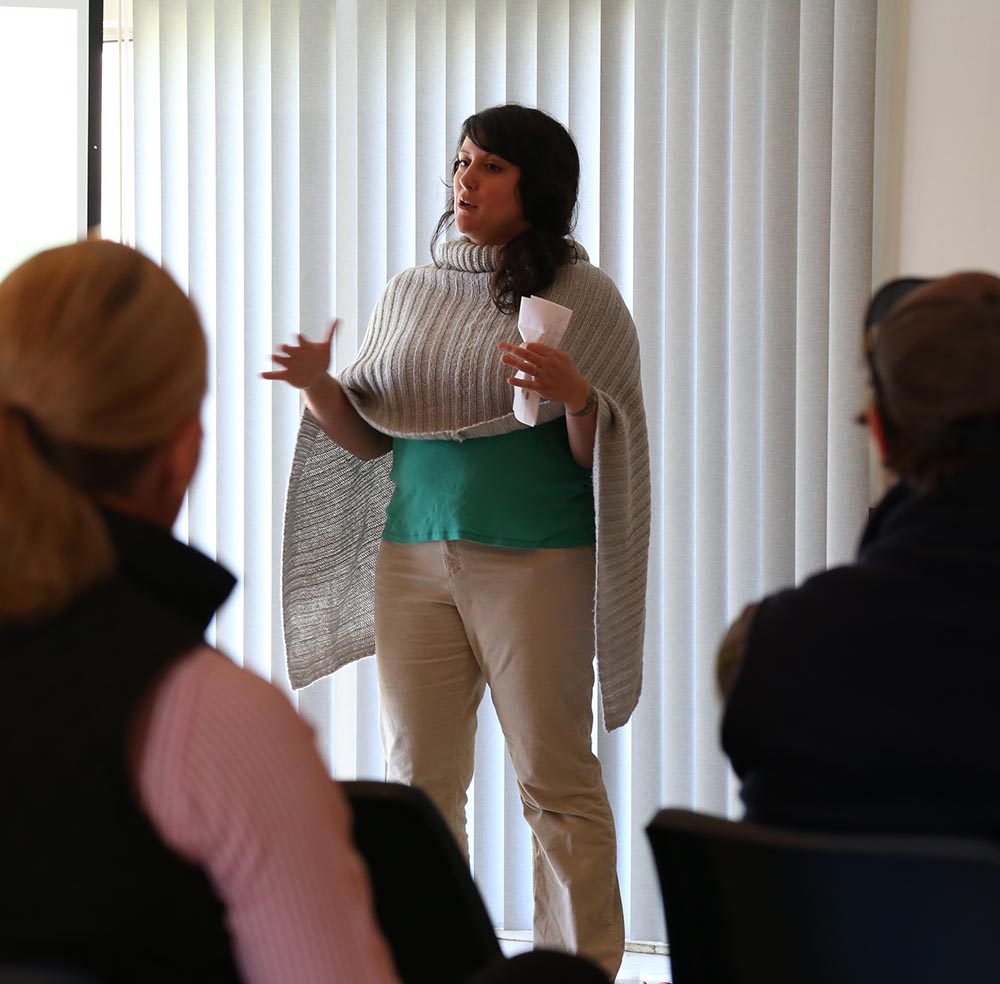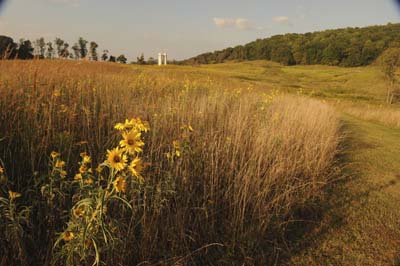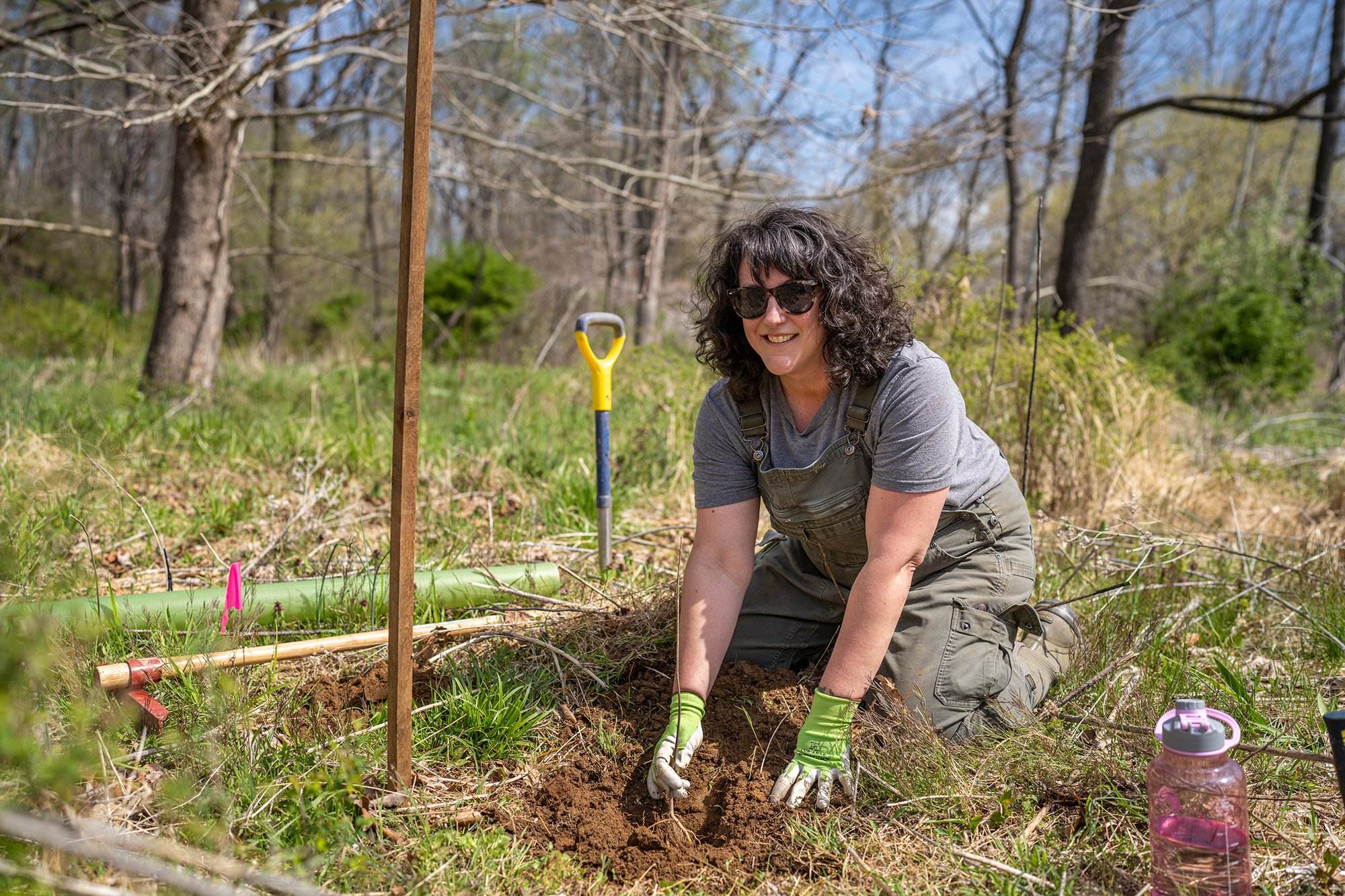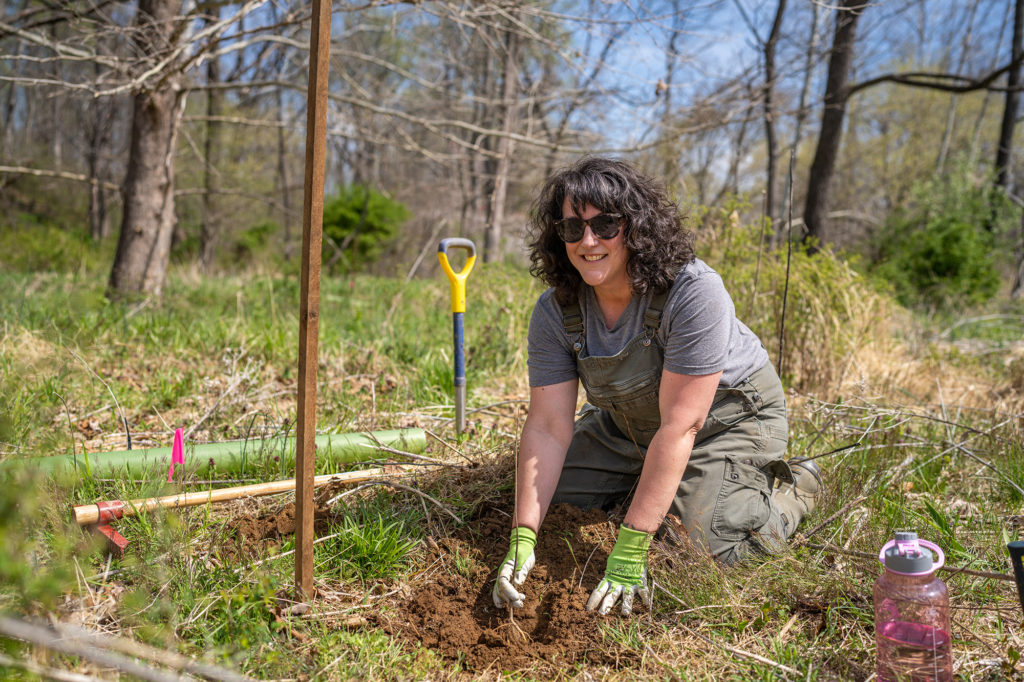Last week, with the help of 56 volunteers, we planted 550 trees along the banks of Thumb Run on the Volgenau property in Fauquier County.
Thumb Run

Protecting Thumb Run
What’s good for wildlife is often good for water quality,” said Celia Vuocolo, PEC’s wildlife habitat and stewardship specialist, as she spoke to guests at the fifth Annual Thumb Run Open House.
This sentiment was reinforced at the event, held on November 13 at the Orlean Fire Hall, by speakers Amy Johnson of Smithsonian Conservation Biology Institute’s Virginia Working Landscapes Program, Janet Davis of Hill House Farm and Nursery and Dr. Tania Cubitt of Performance Horse Nutrition LLC, whose presentations focused on grassland bird conservation, landscaping for wildlife and healthy horse pastures, respectively. While the presentation topics varied, the underlying theme was the same — land stewardship supports clean water.

Thumb Run Wildlife Habitat Corridor Project
In June 2012, PEC received a grant from The Volgenau Foundation to improve wildlife habitat in the northwestern region of Fauquier County. This project area is geographically defined by the Thumb Run watershed; all water in the region drains into Thumb Run and eventually the Rappahannock River. Wildlife habitat improvement goals for this project align with state priority wildlife species including: early successional song birds, pollinators, fresh water aquatic species such as mussels, amphibians, and more. Improving the connectivity of habitat “corridors” such as riparian buffers is a key focus of the project. Habitat practices that have other environmental benefits such as improved water quality are also of high priority. Get involved!
Looking Beyond Property Lines to Restore the Thumb Run Watershed
PEC’s Sustainable Habitat Program Manager, James Barnes, often works with landowners in the Piedmont on a one-on-one basis—helping them find ways (and funding) to improve their properties to restore wildlife habitat and water quality. This conservation work is important, and Barnes has worked with many excited landowners. He’s realized, however, that to make a lasting difference in habitat resoration in the Piedmont, landowners will need to start looking past their property lines.


